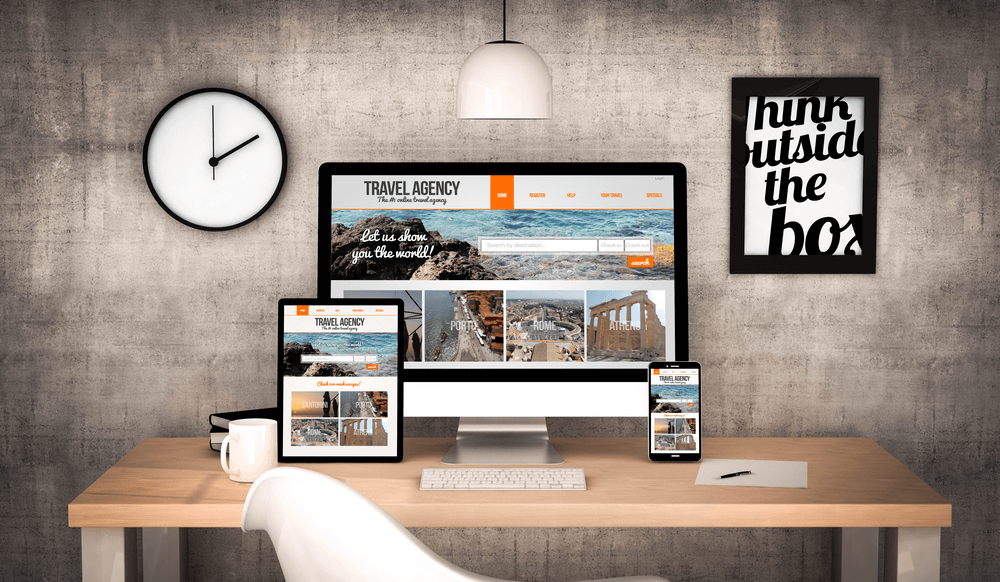 Your website is not just a digital address; it represents your brand.
Your website is not just a digital address; it represents your brand.
If you want people to take your business seriously, you need to have a professional website that can catch their attention and ultimately convince them to buy your product or service.
A professional website is about implementing the right blend of aesthetics, user experience, eye-catching content, and good SEO optimization—all with a touch of your unique brand identity.
It’s about learning how to transform your site into a dynamic, responsive platform that captures your visitor’s attention and keeps them coming back for more.
So, how to start? Texas Web Design can help, and this post can help you get a running start on creating a website that will convert visitors into customers.
1. Mind Your Site’s Aesthetics: Colors, Fonts, and Images
Colors
Aligning colors with your brand identity establishes consistency, while strategic contrasts enhance readability. Beyond aesthetics, colors become a silent language, communicating emotions and creating a memorable visual identity.
Your site’s color palette should be consistent with your brand. This is the secret of giant brands such as Coca Cola, Amazon, Facebook, and McDonalds—colors can create a lasting impression for years to come.
Colors also set the tone for your brand and evoke emotions. You want your visitors to feel relaxed or happy when they look around your site. Avoid neon or bright colors that can overwhelm the senses.
Coordinate your colors with your business’ niche:
- Black, dark green, dark red, pastels, brown: Great for restaurant websites, bars or bakeries
- Orange, navy blue, gray, white, red: Lawyer, digital marketing,
- Green and lighter blues: Medical/dentists, landscaping, non-profit websites
- Gold, pinks, peaches, turquoise: Fashion sites, jewelry, beauty
Fonts
A cohesive font family maintains visual harmony, while different weights and sizes establish a hierarchy, guiding visitors through your content seamlessly.
Fonts convey your brand, whether it’s professional and modern or creative and playful. Choose a font that is clear and legible for all users. Leave cursive, curly fonts to the artists—it’s all about minimal fonts that are easy to read, such as Arial, Helvetic, and Montserrat.
Images
High-quality, relevant images are integral to the professional look of your website. Each image should serve a purpose, enhancing the user experience and reinforcing your brand identity.
Images should range into:
- Pictures of your products or services
- Pictures of your office (perfect if you’re running a beauty salon or any business that people need to go to in order to avail of your services)
- Your logo
- Banners
- Infographics that simplify your business or the content
- Videos or GIFs
The collective impact of color, fonts, and image extends beyond aesthetics; they also influence visitors in how they perceive and connect with your brand.
2. Elevate User Experience (UX): Comfort, Accessibility and Satisfaction
A ‘professional’ site doesn’t just look good; it also feels good. Your website is not just something you will look at—it should cater to your target audience.
At the end of the day, visits matter on your website. That’s why UX is a crucial element in a website. Visitors need to be able to navigate your website with ease; images should load easily, and forms and buttons should work without issue.
Accessibility

Subtle tools like breadcrumbs enhance your site’s accessibility, serving as a secondary navigation system that reveals the user’s location on a site. Dropdown menus and search bars are also instrumental in providing easy access to information.
Speed and Performance
Site speed also plays an important role on your website. People will leave if the site takes even more than two seconds to load. Having too many pop-ups can also turn your visitors off. Use them sparingly.
Compatibility and Responsiveness
The best websites are fully responsive. They automatically adapt to fit any screen size, ensuring a superb user experience no matter the device being used. When everyone is on their phones, you need your website to adapt, too.
Optimize your website for mobile devices to make browsing easier for your visitors.
3. Get Your Message Across: Content and Marketing Strategies
Content is still king.
It connects your brand with your audience, and effective marketing ensures that your message reaches its intended recipients. Creating compelling content involves more than just words on a page—it’s about storytelling, engagement, and providing value.
Rich, Engaging Content
Good, engaging, and well-written content makes your website look more professional. Make sure your content is not only informative but also interesting to keep people’s attention. The way you write should fit well with your brand and what your audience expects.
Speak directly to what your audience needs, offer clear solutions, and clearly explain how your services are the best choice for them. Keep your website content current by regularly adding new pages and blog posts.
Doing this adds value for people who come back to your site and helps improve your website’s ranking in search engines.
Reaching a Wider Audience
Content needs to be paired with SEO to actually rank in the search results. SEO involves using keywords, optimizing page speed, ensuring mobile-friendliness, and having high-quality backlinks.
Optimizing your page is as easy as adding meta titles, descriptions, and headers. An SEO-friendly content ensures that it’s not only engaging but also ranks well in search engine results, reaching a broader audience.
Social media is a powerful platform for amplifying your message. Tailor your approach to each platform, utilizing hashtags, captions, and visual elements to maximize engagement. Social media not only extends the reach of your content but also facilitates direct interaction with your audience. All of your social media profiles should link back to your main website.
Calls-to-Action (CTAs): Leading the Audience
You’ve grabbed the audience’s attention with your excellent content and showed up in their search results due to your masterful SEO practices. Now it’s about turning that attention and interest into action. Enter Calls-to-Action (CTAs), the gentle (or sometimes more direct) suggestions that guide users toward taking a specific action.
These actions can range from ‘subscribing to a newsletter’, ‘requesting more information’, ‘booking a demo’, to ‘purchasing a product’. Clear and compelling CTAs should lead your audience toward the steps you want them to take, turning your website into a conversion-generating machine.
Developing a Content Strategy

It’s all about making sure you’ve got a plan for your content that helps push everyone in the same direction.
When you keep putting out stuff that matches what you’re all about, you’re going to build a real bond with your visitors, get more people visiting your site, and, before you know it, those visitors will become your customers.
Getting your content and marketing strategies just right can really make your website shine.
It turns it into this awesome place that doesn’t just share information but also gets people excited and ready to jump on board with what you’re offering.
For anyone running a business, nailing this can not only make your site look super professional but also be a game-changer in hitting those big business goals.
Refining Your Approach Through Analytics and Iteration
Make sure to use analytics tools to keep an eye on how your content’s doing. Look at stuff like how much people are getting involved, how often they’re taking action, and if they’re quickly leaving your site.
Digging into this data helps you figure out what your audience really likes and what needs a bit of work. Use what you learn to tweak your content strategy, so you’re always getting better at talking to your folks in a way that clicks with them.
Conclusion
A good web design is all about mixing the right amount of eye-catching design, smart layout, engaging content, and savvy tactics. Stick to these pointers, and your website will be all set to wow your visitors, get your brand’s message across clearly, and help smash your business goals.
What you’ll end up with is a site that’s not only beautiful but also turns browsing into a pleasant trip for your visitors. So, enjoy the ride to making your online presence shine—here’s to your success! Contact us today!

